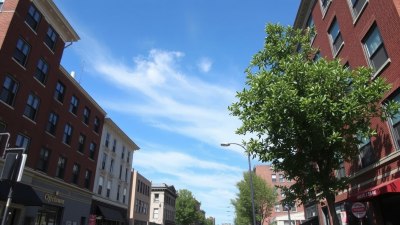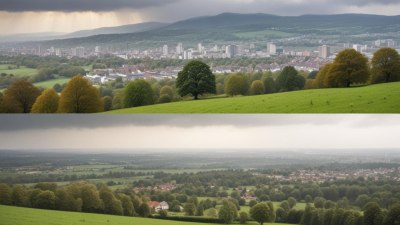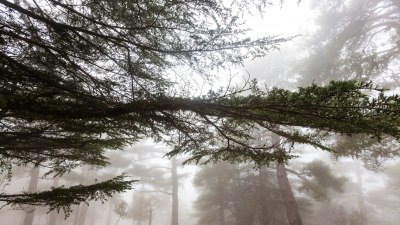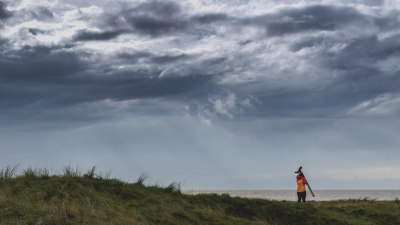Why That One Street in Your Neighborhood Is Always Windier Than Science Allows
Explore the surprising reasons behind unusually windy streets in neighborhoods, mixing urban design, microclimates, and physical laws.

Have you ever noticed that one street in your neighborhood feels consistently windier than others, sometimes even defying your expectations of how wind should behave? It's a common experience that many brush off as anecdotal or merely coincidental, but the reality involves a fascinating intersection of science, urban design, and local geography. This article dives deep into the reasons why that one particular street is always windier than science might seem to allow.
The Nature of Wind and Urban Microclimates
Wind is the movement of air from areas of high pressure to low pressure, driven primarily by the sun heating the Earth's surface unevenly. At a broad scale, atmospheric circulation patterns shape the prevailing winds across regions and continents. However, when wind enters an urban environment, its behavior can change dramatically due to what scientists call microclimates—localized atmospheric zones where the climate differs from the surrounding areas.
Urban microclimates are shaped by buildings, streets, trees, and the materials used in construction. These elements alter airflow, sunlight exposure, and heat retention, resulting in distinct weather conditions within small areas. So the first factor contributing to a street's persistent windiness is its role in creating a specific microclimate.
Street Orientation and the Wind Channel Effect
One of the most significant determinants of wind behavior on a street is its orientation relative to prevailing winds. Streets aligned parallel to dominant winds often act as wind corridors, funneling and accelerating airflow through what is known as the Venturi effect. Named after the Italian physicist Giovanni Venturi, this principle describes the increase in fluid speed when it passes through a narrowed section of a pipe or channel.
In urban settings, the narrow corridors between buildings function like pipes, and the street itself can cause the wind speed to increase. If that one windy street runs exactly in line with prevailing winds, it can amplify the wind sensation significantly compared to neighboring streets that are oriented differently or blocked by solid structures.
Building Design and Street Canyon Geometry
Beyond orientation, the physical features of the street play a crucial role—especially the concept of the 'street canyon.' This term describes streets bordered by continuous rows of tall buildings on both sides, creating a canyon-like space. The width of the street, height of buildings, and the ratio between these dimensions determine how wind currents circulate within this urban canyon.
When wind encounters a street canyon, several fluid dynamic phenomena take place: acceleration, vortex formation, and turbulence. If the buildings are sufficiently tall and spaced properly, wind entering the canyon can be funneled downwards or along the street length, increasing horizontal wind speed. The canyon might also trap vortices, causing gusty and unpredictable wind patterns. Such effects give rise to consistent windiness, sometimes stronger than expected from meteorological predictions alone.
Surface Roughness and Frictional Effects
Another factor influencing wind speed on a street is surface roughness caused by the materials and objects within the urban environment. Roughness elements include trees, parked cars, street furniture, pedestrians, and surface texture. These irregularities apply frictional drag to the airflow, generally reducing wind speed near the ground.
Yet, paradoxically, variability in roughness can cause acceleration in localized areas. For example, a relatively smooth street segment between heavily vegetated zones may develop strong channeling winds. Similarly, discontinuities in building height or gaps between structures can create pressure differentials that increase airflow velocity. This means micro-scale variations in roughness can produce unexpectedly strong winds along that one street where other surroundings dampen winds.
Temperature Differences and Local Pressure Variations
The urban heat island effect—where cities are warmer than surrounding countryside—also alters wind patterns by modifying temperature gradients and local pressure. During sunny days, sunlit walls and paved streets absorb heat, warming air pockets differently along various parts of a neighborhood.
If that windy street experiences stronger solar heating due to its orientation or surface material, it can develop a localized thermal plume. Warmer air rising from the street hot spots induces upward drafts and replaces them with cooler air rushing in horizontally, increasing wind speed. Such thermally-induced pressure differences add another layer of complexity, sometimes creating prevailing winds that science based on large-scale data would not predict.
Topography and Terrain Influences
No discussion of wind quirks is complete without examining topography. Hills, valleys, and other terrain features profoundly affect local wind patterns by channeling, deflecting, or accelerating airflow. Even subtle elevation changes around a street can concentrate winds as air moves around obstacles.
For example, if that particular street lies in a small valley or at the base of a gentle slope aligned with the direction of prevailing winds, it can experience a funneling effect. Air speeds up as it passes through constricted spaces or downwind slopes, making the street notably windier. Conversely, natural windbreaks such as hills or dense vegetation on neighboring streets can shelter those areas, sharpening the contrast in windiness between streets.
The Role of Atmospheric Stability and Weather Conditions
Atmospheric stability—a measure of how temperature changes with altitude—influences turbulence and vertical mixing of air. On stable days (usually clear, calm mornings or nights), wind near the surface may be lighter and more laminar. However, during unstable conditions (sunny afternoons with strong heating), increased turbulence can mix winds from higher altitudes down to street level.
This mixing effect is not uniform throughout urban areas; it depends on how sunlight hits various streets and the degree of obstruction by buildings and trees. The result can be intensified gustiness on certain streets at specific times of day, explaining why the windier street may not always feel equally windy but maintains a reputation for higher average gusts.
Unexpected Interactions and Urban Planning Oversights
Sometimes, the windiness of a street results from unforeseen interactions between multiple factors or from urban planning decisions that inadvertently amplify winds. For example, a newly constructed high-rise building might create a wind tunnel effect at its base, known as a downdraft or pedestrian wind hazard, which can spill onto adjacent streets.
Moreover, a combination of street orientation, building design, and vegetation removal during development may magnify wind speeds. Such cumulative effects often go unnoticed until residents experience uncomfortable or even hazardous wind conditions. Modern urban planners and architects are increasingly aware of these issues but legacy neighborhoods retain these quirks.
Wind Studies and Mitigation Strategies
To address persistent wind issues, cities now conduct wind tunnel testing, computational fluid dynamics (CFD) modeling, and wind impact assessments before approving large construction projects. These studies help predict wind behavior by simulating how air flows around proposed buildings and streets, allowing planners to install windbreaks or adjust designs.
Common mitigation strategies include planting trees, installing awnings, modifying building shapes, incorporating porous fencing, and adjusting street alignment when possible. These interventions reduce wind speeds and turbulence, creating more comfortable pedestrian environments. While not always feasible for existing streets, retrofit solutions and green infrastructure can be effective over time.
The Exciting Complexity of Urban Wind
Far from a simple natural phenomenon, wind in urban environments embodies the dynamic complexity of physics, geography, and human design. That one street in your neighborhood that seems perpetually windier than scientific norms suggests is in reality a microcosm of intersecting factors: wind channeling, street canyon geometry, thermal gradients, surface roughness, topography, atmospheric conditions, and urban development history.
Understanding these factors not only satisfies curiosity but also informs better urban and architectural planning. It ensures cities can be designed or adapted to be more comfortable, safe, and environmentally harmonious. So next time you feel that gust on your local windy street, remember—it's the invisible outcome of a rich, multi-layered urban dance shaping how the wind moves around you.











